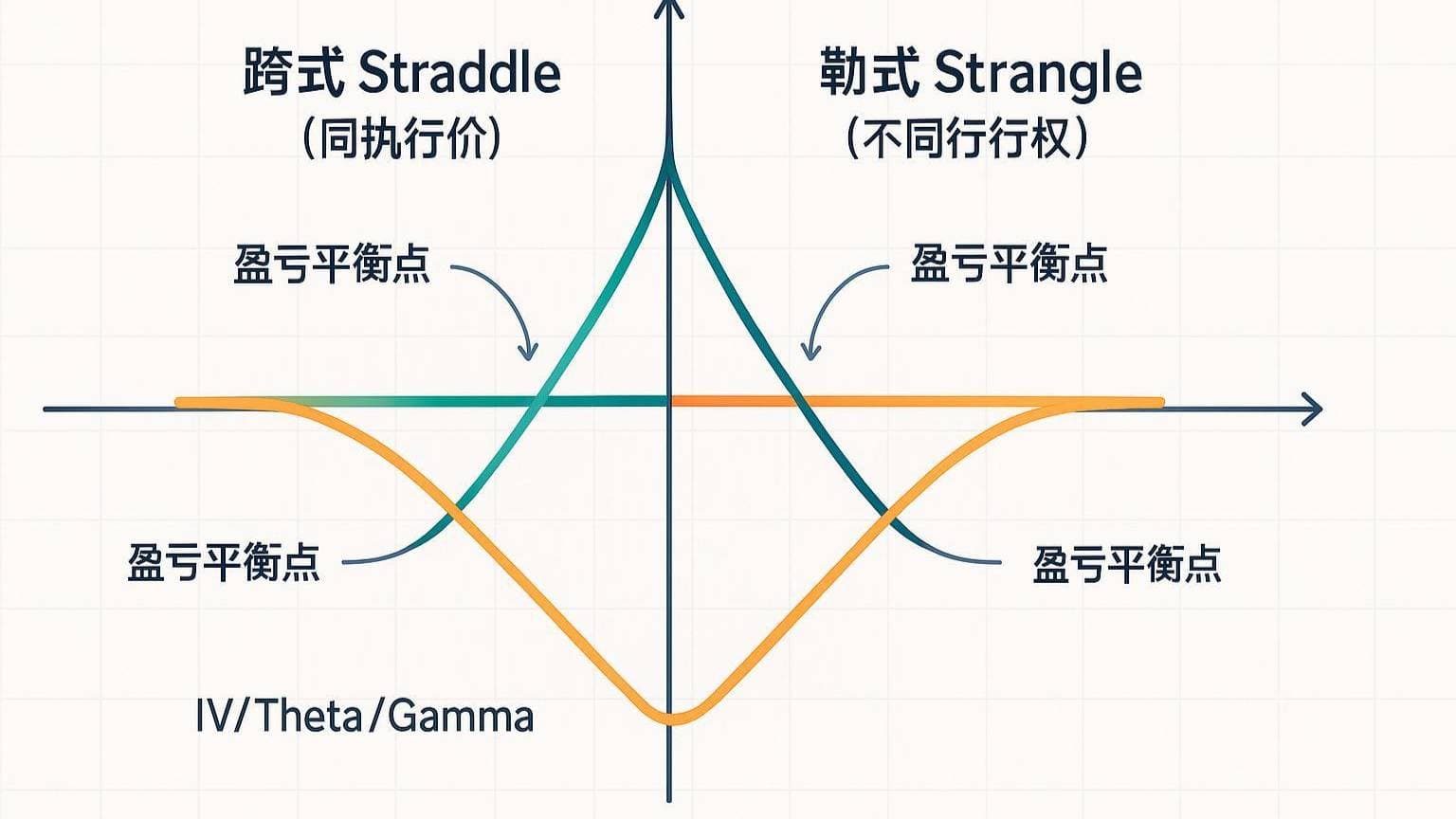- EasyCard
- Trade
- Help
- Announcement
- Academy
- SWIFT Code
- Iban Number
- Referral
- Customer Service
- Blog
- Creator
Money-Saving Guide for Remittances: Remitly vs. Competitors' Rates and Fees Comparison

Image Source: unsplash
In today’s globalized world, cross-border remittances have become an essential part of many people’s lives. However, the differences in fees, exchange rates, and hidden costs across platforms can be significant, and a small oversight could lead to unnecessary expenses. By comparing different remittance platforms, you can find a more cost-effective solution, allowing you to save money for other important purposes.
Take Remitly as an example: its transparent fee structure and fast delivery service have earned widespread praise. On the other hand, Payoneer dominates the freelancer payment market, with an average annual transaction volume of about $133,000 per user, showcasing its strong position in the small and micro-business sector. By deeply analyzing the features of these platforms, you can better understand which service best suits your needs.
Key Takeaways
- When choosing a remittance platform, consider the differences in fees and exchange rates. Transparent fees can help you save money.
- Remitly offers fixed fees, ideal for frequent small transactions, making costs easier to calculate.
- Wise is known for real-time exchange rates and low fees, suitable for large remittances with transparent pricing.
- Before transferring, use a fee calculator to compare costs across platforms and choose the most cost-effective option.
- Opt for platforms that allow locking in exchange rates to avoid fluctuations and ensure stable received amounts.
Fee Comparison

Image Source: unsplash
When selecting a cross-border remittance platform, fees are a critical factor. Different platforms have unique fee structures, and understanding these differences can help you better manage costs.
Remitly’s Fees
Remitly is renowned for its transparent fee structure. Fees vary depending on the remittance amount and destination. Typically, small transfers incur lower fees, while larger transfers may benefit from more favorable rates. For example, when sending money to certain countries, Remitly offers a fixed fee option as low as $3.99 (approximately 29 CNY). Additionally, Remitly’s fees do not increase significantly with larger amounts, making it user-friendly for frequent remitters.
Tip: If you regularly send money to the same country, use Remitly’s fee calculator to estimate costs in advance and avoid unnecessary expenses.
Wise’s Fees
Wise is known for its “no hidden fees” policy and real-time exchange rates. Fees are typically calculated as a percentage of the remittance amount, varying by country and currency. For example, when transferring to European markets, fees may range from 0.5% to 1%. Wise’s strength lies in clearly displaying all fees upfront and using the mid-market exchange rate, ensuring you know exactly where your money is going.
Here’s an example of Wise’s fee structure:
| Amount Range | Fee Rate | Notes |
|---|---|---|
| $1 - $500 | 0.5% | Applies to most currencies |
| Above $500 | 0.3% - 0.5% | Lower rates for larger amounts |
This percentage-based fee structure is particularly attractive for small remittances, as it avoids high fixed fees.
Western Union’s Fees
Western Union is one of the most well-known remittance platforms globally, but its fee structure is relatively complex. Fees depend on the amount, destination, and payment method. For instance, bank account payments incur lower fees, while credit card payments may add extra costs. Additionally, Western Union may charge a telegraph fee, which can significantly increase the total cost in some cases.
Here’s a sample of Western Union’s fee structure:
| Amount Range | Fee Rate | Notes |
|---|---|---|
| 1 CNY - 50,000 CNY | 1‰ (minimum 50 CNY) | Applies to overseas remittances |
| Above 50,000 CNY | Up to 260 CNY | Additional telegraph fee (80 CNY for HK/Taiwan, 150 CNY for other countries) |
While Western Union offers broad coverage, its complex fee structure can be confusing. It’s advisable to carefully review the fee details before using the platform.
Note: Western Union’s fees may vary by region and payment method, so confirm the specific costs in advance.
From the comparison, Remitly’s transparent and fixed fees are more appealing for small and frequent remittances, while Wise is ideal for users seeking real-time rates and low percentage-based fees. Western Union, despite its wide coverage, may suit specific needs due to its complex fee structure.
Other Platforms’ Fee Overview
Besides Remitly, Wise, and Western Union, there are other platforms to consider, each with unique fee structures tailored to different needs. Here’s an overview of some common platforms:
1. PayPal’s Fee Structure
PayPal, a globally recognized payment platform, offers broad remittance coverage but has relatively high fees:
- Fees: Typically 4%-5% of the remittance amount.
- Currency Conversion Fee: PayPal adds a 2.5%-4% markup on the market exchange rate.
- Fixed Fees: Additional fixed fees may apply depending on the destination country (e.g., $2.99 for transfers to the US).
Tip: PayPal is suitable for small remittances or quick payments, but high currency conversion fees can significantly increase costs.
2. Skrill’s Fee Structure
Skrill, an e-wallet focused on online payments and cross-border remittances, is widely used in Europe and North America. Its fee structure includes:
- Fees: 1.45% for bank account transfers (minimum €0.5, approx. $0.53).
- Currency Conversion Fee: 3.99% markup on exchange rates.
- VIP User Benefits: High-frequency users enjoy lower fees and better rates.
Skrill’s flexible fee structure and fast delivery make it ideal for users prioritizing speed, though its conversion fees are high.
3. Xoom’s Fee Structure
Xoom, a PayPal-owned remittance service, focuses on fast transfers. Its fee structure includes:
- Fees: Starting at $4.99, varying by amount and payment method.
- Currency Conversion Fee: Similar to PayPal, a 2.5%-3.5% markup on exchange rates.
- Payment Method Impact: Credit card payments incur higher fees.
Xoom excels in speed, making it suitable for urgent remittances, but its fees and rate markups are relatively high.
4. OFX’s Fee Structure
OFX, an Australia-based international remittance company, specializes in large transfers. Its fee structure includes:
- Fees: Typically no fixed fees, but a minimum transfer amount of $1,000 is required.
- Currency Conversion Fee: 0.4%-1.5% markup, depending on the amount and currency.
OFX is ideal for large remittances, with low rate markups and no fixed fees, particularly for business users.
5. Revolut’s Fee Structure
Revolut, a UK-based fintech company, offers various financial services, including cross-border remittances. Its fee structure includes:
- Fees: Free users get a limited free remittance quota monthly; additional transfers incur 0.5%-1% fees.
- Currency Conversion Fee: Mid-market rates on weekdays, with a 0.5%-1% markup on weekends.
- Premium Account Benefits: Subscribed users enjoy higher free remittance quotas and lower conversion fees.
Revolut is suitable for frequent small remittances, with flexible fees and mid-market rates as key advantages.
Exchange Rate Analysis
Exchange rates are a critical factor in cross-border remittances, directly affecting the final received amount. Different platforms offer varying rates, which can significantly impact your costs. Below is a detailed analysis of major platforms’ exchange rates.
Remitly’s Exchange Rates
Remitly is favored for its transparent exchange rate policy. The platform typically offers a rate-locking option, ensuring the rate is fixed at the time of transfer, protecting against fluctuations. This is particularly useful for users needing stable cash flow, such as small businesses or family remitters.
Tip: For transfers to countries with volatile currencies, Remitly’s rate-locking feature helps mitigate risks, ensuring the recipient gets the expected amount.
Remitly’s rates are close to the mid-market rate, though slightly lower than Wise’s. However, the convenience of rate locking compensates for this gap, making it an ideal choice for users prioritizing amount stability.
Wise’s Exchange Rates
Wise is renowned for offering the mid-market exchange rate with no additional markup, ensuring you get rates closest to the real-time market. This transparency makes Wise a top choice for international traders and freelancers.
Wise’s exchange rate features include:
- Real-Time Updates: Rates are synced with the forex market for accuracy.
- No Hidden Fees: All costs are included in the upfront fees, with no rate markups.
- Ideal for Large Transfers: The closer rates are to the mid-market, the more you save on larger amounts.
For example, transferring $1,000 to Europe using Wise’s mid-market rate could save you tens of dollars compared to other platforms. This is especially significant for frequent large transactions.
Note: Exchange rate fluctuations can significantly impact received amounts. According to annual reports from major financial institutions, rate volatility can destabilize foreign exchange reserves, especially for minor currencies. Thus, choosing a platform with real-time rates is crucial.
PayPal’s Exchange Rates
PayPal’s exchange rate policy differs from others, typically adding a 2.5%-4% markup on the mid-market rate. This can significantly increase costs, especially for large remittances.
PayPal’s rate features include:
- Rate Markup: Rates are 2.5%-4% below the mid-market rate.
- Suitable for Small Transfers: Higher markups make PayPal better for small or urgent payments.
- Conversion Fees: Additional fees apply when converting between currencies.
For example, transferring $500 to North America with PayPal’s rate markup could add $10-$20 in costs, which may not be cost-effective for budget-conscious users.
Suggestion: For frequent cross-border transactions, opt for platforms with rates closer to the mid-market, like Wise or Remitly, to reduce costs.
Impact of Exchange Rates on Received Amounts
Exchange rate fluctuations can significantly affect the final amount received. Key factors include:
- Rate volatility may cause the recipient to receive less than expected.
- Minor currencies are more susceptible to rate fluctuations.
- Urgent transfer needs may force you to accept less favorable rates.
Choosing platforms with locked or mid-market rates can mitigate these risks, ensuring safe and predictable transfers.
Detailed Impact of Exchange Rates
Exchange rates are one of the most critical factors in cross-border remittances, directly determining the recipient’s final amount. Rate differences across platforms can lead to significant cost variations. Understanding these impacts helps you better plan your cash flow.
1. Impact of Rate Fluctuations
Exchange rates are not static and are influenced by factors like market supply and demand, geopolitical events, and monetary policy changes. Transferring during volatile periods may result in discrepancies between expected and received amounts.
Tip: For transfers to countries with highly volatile currencies, like Argentina or Turkey, platforms like Remitly with rate-locking features can reduce risks.
2. Impact of Platform Rate Differences
Rate variations across platforms directly affect received amounts. For instance, Wise offers mid-market rates, while PayPal and Western Union add markups. Here’s a comparison example:
| Platform | Rate (Assuming 1 USD to) | Markup (vs. Mid-Market) | Transfer Amount | Received Amount |
|---|---|---|---|---|
| Wise | 7.30 | None | $1,000 | 7,300 units |
| PayPal | 7.00 | -4% | $1,000 | 7,000 units |
| Western Union | 7.10 | -2.7% | $1,000 | 7,100 units |
As shown, platforms like Wise with mid-market rates maximize received amounts, especially for large transfers.
3. Minor Currency Conversion Specifics
Converting to minor currencies, such as Vietnamese Dong or Indonesian Rupiah, can amplify rate fluctuation impacts due to lower market liquidity. Some platforms may charge higher markups for minor currencies.
Note: For minor currency conversions, platforms like Wise or BiyaPay with mid-market rates can help reduce costs.
4. Balancing Rates and Fees
While rates significantly affect received amounts, fees are equally important. Some platforms may offer competitive rates but offset them with high fees, hiding costs in the fee structure.
Suggestion: Consider both rates and fees when choosing a platform. Transparent platforms like BiyaPay provide clear cost breakdowns.
5. Maximizing Received Amounts
To maximize received amounts, consider these strategies:
- Choose Mid-Market Rate Platforms: Prioritize platforms like Wise or BiyaPay for real-time mid-market rates.
- Avoid High Volatility Periods: Avoid large transfers during volatile market periods.
- Lock Rates: For volatile currencies, use platforms like Remitly with rate-locking options.
- Compare Platforms: Use multiple platforms’ fee calculators to find the best option.
These strategies help minimize the impact of rate fluctuations and platform differences, ensuring safe and efficient transfers.
Hidden Fees and Transparency
When choosing a cross-border remittance platform, a transparent fee structure is crucial. Hidden fees not only increase costs but also disrupt financial planning. Below is an analysis of major platforms’ transparency.
Remitly’s Fee Transparency
Remitly earns trust with its clear fee structure. All fees, including handling and exchange rates, are displayed upfront. Whether for small or large transfers, its fee calculator helps avoid unexpected costs. The rate-locking feature further ensures amount stability, which is vital for frequent remitters.
Tip: Use Remitly’s fee calculator to keep every transaction within budget.
Western Union’s Hidden Fees
Western Union’s fee structure is complex. While offering multiple payment methods, certain options, like credit card payments, incur higher fees. Additionally, telegraph fees are a common but often overlooked cost, significantly increasing expenses for large transfers.
Note: Before using Western Union, review its fee details, especially for telegraph fees and payment methods.
Other Platforms’ Hidden Fees
Other platforms may also have hidden costs:
- PayPal: Rate markups (2.5%-4%) are a primary hidden cost, significantly impacting large transfers.
- Skrill: Low fees but high 3.99% conversion fees, especially for minor currencies.
- Xoom: High fees and rate markups, particularly for credit card payments.
Suggestion: When choosing a platform, focus on both explicit fees and hidden costs like rate markups. Comparing multiple platforms helps find the best solution.
This analysis shows that fee transparency directly impacts your remittance experience. Choosing a platform with clear fees saves costs and enhances efficiency.
Transfer Speed and Convenience

Image Source: pexels
In cross-border remittances, transfer speed and operational convenience are key factors. Different platforms vary significantly in delivery times, and understanding these differences helps you choose the best service.
Remitly’s Speed
Remitly is praised for its fast delivery. While specific times aren’t disclosed, user feedback highlights its efficiency, especially for small transfers. Its rate-locking feature ensures funds arrive securely during rate fluctuations, and its intuitive interface simplifies the process, benefiting frequent remitters and small businesses.
Wise’s Speed
Wise is known for its fast transfers and real-time rates. Most transfers are completed within 10 hours, with some achieving instant delivery. This speed is a significant advantage for users needing quick fund turnover.
Wise’s delivery time data:
| Service | Estimated Delivery Time |
|---|---|
| Wise | Within 10 hours, often same-day |
Wise’s global coverage ensures efficient transfers to North America, Europe, or Asia-Pacific.
Other Platforms’ Speed Comparison
Delivery times vary by platform, method, and market. Here’s a delivery time breakdown:
| Transfer Method | Delivery Time |
|---|---|
| Wire Transfer | 1 to 3 business days |
| Currency Exchange | 2 to 5 business days |
| Online Banking | 1 to 3 business days |
| Check Transfer | 10 to 15 business days |
Wire transfers and online banking are faster, while checks take longer. Wise and Remitly excel in speed, especially for urgent needs.
For users needing fast delivery, platforms with instant or same-day transfers are critical. Comparing speed and convenience ensures efficient fund transfers.
Transfer Limit Comparison
When selecting a cross-border remittance platform, transfer limits are a key consideration. Platforms impose different restrictions on single transactions, affecting large fund transfers. Below is a comparison of major platforms’ limits.
Remitly’s Transfer Limits
Remitly offers flexible limits, varying by destination and payment method. Bank account payments typically allow higher limits, while credit card payments are lower. For example, transfers to North America may have a $10,000 single-transaction limit, providing convenience for large transfers.
Tip: For transfers near the platform’s limit, confirm restrictions with customer service to ensure smooth transactions.
Wise’s Transfer Limits
Wise’s transparent fees and rates come with high limits, typically around $50,000 per transaction, depending on the country. It also supports batch transfers, allowing large amounts to be split into multiple transactions, ideal for businesses or individuals needing significant fund transfers.
Wise’s limit features:
- Single Transaction Limit: $50,000, varying by market.
- Batch Transfers: Supports multiple transactions for large amounts.
- Business Account Benefits: Higher limits for business users.
Note: For large Wise transfers, ensure your account is fully verified to avoid delays.
Other Platforms’ Transfer Limits
Other platforms have distinct limits:
1. Western Union
Western Union’s limits vary by region and payment method, typically $5,000 per transaction. Business accounts may request higher limits.
2. PayPal
PayPal’s personal account limit is $10,000, with higher limits for business accounts, subject to destination country regulations.
3. BiyaPay
BiyaPay, a leading multi-asset wallet, offers unlimited transfers. Whether for small or large amounts, BiyaPay meets diverse needs, especially for frequent large transactions.
Here’s a comparison table:
| Platform | Single Transaction Limit | Notes |
|---|---|---|
| Western Union | $5,000 | Business accounts may request higher limits |
| PayPal | $10,000 | Higher limits for business accounts |
| BiyaPay | No limit | Supports same-day delivery |
BiyaPay’s unlimited transfers are ideal for large fund transfers, while Remitly and Wise offer high single-transaction limits suitable for most users.
Security and User Reviews
Remitly’s Security
Remitly excels in security, using multi-layered protection to safeguard funds and personal information. It employs 256-bit SSL encryption to prevent data theft during transmission and monitors transactions in real-time to detect suspicious activity. Two-factor authentication further enhances account security.
Remitly’s security testing includes:
| Assessment Method | Description |
|---|---|
| Security Testing | Identifies system vulnerabilities |
| Audit Logs | Records system activities to detect threats |
| Security Analysis | Evaluates system performance against threats |
These measures ensure rapid response to cyber threats, protecting user interests.
BiyaPay’s Security
BiyaPay, a leading multi-asset wallet, excels in security with bank-grade encryption to protect transaction and asset data. Its localized transfer methods reduce intermediary risks, minimizing delays or interceptions.
BiyaPay enhances security through:
- Real-Time Monitoring: 24/7 transaction monitoring for anomalies.
- Identity Verification: Strict verification ensures authorized access.
- Multi-Asset Security: Protects over 200 digital and 30 fiat currencies.
These measures make BiyaPay a trusted platform for remittances and asset management.
Other Platforms’ User Reviews
User reviews reflect platform quality. Here’s an overview:
| Research Method | Purpose |
|---|---|
| Data Collection | Understand consumer needs to optimize services |
| Data Analysis | Improve satisfaction and market performance |
Wise is praised for its transparent fees and rates, especially in Europe. Western Union’s wide coverage is popular, but its complex fees draw criticism. PayPal’s reviews are mixed: small payment users appreciate convenience, while large transfer users question high fees.
Choosing a secure platform with positive reviews is crucial. Remitly’s monitoring and BiyaPay’s multi-asset protection offer reliable experiences.
Best Alternative: BiyaPay
BiyaPay’s Fee Structure and Rates
BiyaPay earns global praise for its transparent fees and mid-market rates. Supporting over 190 countries and 30+ local currencies, it allows seamless conversion of digital currencies (e.g., USDT) to fiat with no hidden fees.
BiyaPay’s fee and rate features:
| Transfer/Withdrawal Amount (USD) | Withdrawal Fee | Discount |
|---|---|---|
| 200 ≤ Amount < 2,000 | $20 | None |
| 2,000 ≤ Amount < 50,000 | 1% | None |
| 50,000 ≤ Amount < 100,000 | 0.90% | 10% off |
| 100,000 ≤ Amount < 500,000 | 0.80% | 20% off |
| 500,000 ≤ Amount < 1,000,000 | 0.70% | 30% off |
| 1,000,000 ≤ Amount < 2,000,000 | 0.60% | 40% off |
| Amount ≥ 2,000,000 | 0.50% | 50% off |
This low-cost, transparent model makes BiyaPay ideal for remittances and multi-asset management.
Tip: For frequent multi-currency or cross-border transactions, BiyaPay’s real-time conversion feature saves significant costs.
BiyaPay’s Transfer Speed and Convenience
BiyaPay excels in speed and convenience, using localized transfers to bypass complex intermediaries. Both small and large transfers achieve same-day delivery, critical for users needing fast fund turnover. Its intuitive interface allows registration and use within a minute, without requiring complex offshore accounts.
Suggestion: For frequent or urgent international transfers, BiyaPay’s same-day delivery is reliable.
BiyaPay’s Multi-Asset Management
BiyaPay is more than a remittance tool; it’s a robust multi-asset wallet supporting 30+ fiat and 200+ digital currencies. Users can easily convert assets (e.g., USDT to USD or HKD) for investments in US or Hong Kong stock markets.
BiyaPay’s real-time stock trading eliminates the need for offshore accounts, offering a “one-account, global investment” model for flexibility and convenience.
Highlight: BiyaPay’s multi-asset management is ideal for users handling remittances and investments simultaneously, meeting diverse financial needs.
When choosing a platform, consider fees, rates, speed, and security. Each platform has unique strengths:
- Remitly: Transparent fees and rate locking, ideal for fast and stable transfers.
- Wise: Mid-market rates and low fees, suitable for real-time rates and large transfers.
- BiyaPay: Multi-asset management with no limits, perfect for flexible currency and asset handling.
Additional metrics to consider:
- VV (Video Views): Reflects platform user engagement.
- GMV (Gross Merchandise Volume): Indicates transaction scale.
- Conversion Rate (CR): Measures user goal completion.
Comparing these metrics helps identify the best platform for your needs, saving costs and boosting efficiency.
FAQ
How to Choose the Right Remittance Platform?
Consider fees, rates, speed, and security. For real-time rates, Wise is a great choice; for fast delivery, Remitly excels; for multi-asset management and unlimited transfers, BiyaPay is ideal.
How to Avoid Hidden Fees in Remittances?
Choose transparent platforms like Wise or BiyaPay, which display all fees upfront. Avoid complex fee structures like Western Union’s, and review details for rate markups and telegraph fees.
Which Platform Is Best for Large Transfers?
Wise and BiyaPay are ideal. Wise offers high limits and batch transfers for businesses. BiyaPay’s unlimited transfers and same-day delivery suit large fund transfers.
Which Platform Has the Fastest Transfers?
BiyaPay and Wise excel. BiyaPay’s localized transfers ensure same-day delivery. Wise supports instant transfers, ideal for urgent needs. Compare based on your target market.
How to Ensure Fund Security During Transfers?
Choose platforms with bank-grade encryption, like BiyaPay or Remitly. BiyaPay’s real-time monitoring and verification protect assets. Remitly’s two-factor authentication ensures account safety. Avoid platforms with weak security measures.
*This article is provided for general information purposes and does not constitute legal, tax or other professional advice from BiyaPay or its subsidiaries and its affiliates, and it is not intended as a substitute for obtaining advice from a financial advisor or any other professional.
We make no representations, warranties or warranties, express or implied, as to the accuracy, completeness or timeliness of the contents of this publication.




Contact Us
Company and Team
BiyaPay Products
Customer Services
is a broker-dealer registered with the U.S. Securities and Exchange Commission (SEC) (No.: 802-127417), member of the Financial Industry Regulatory Authority (FINRA) (CRD: 325027), member of the Securities Investor Protection Corporation (SIPC), and regulated by FINRA and SEC.
registered with the US Financial Crimes Enforcement Network (FinCEN), as a Money Services Business (MSB), registration number: 31000218637349, and regulated by FinCEN.
registered as Financial Service Provider (FSP number: FSP1007221) in New Zealand, and is a member of the Financial Dispute Resolution Scheme, a New Zealand independent dispute resolution service provider.


















